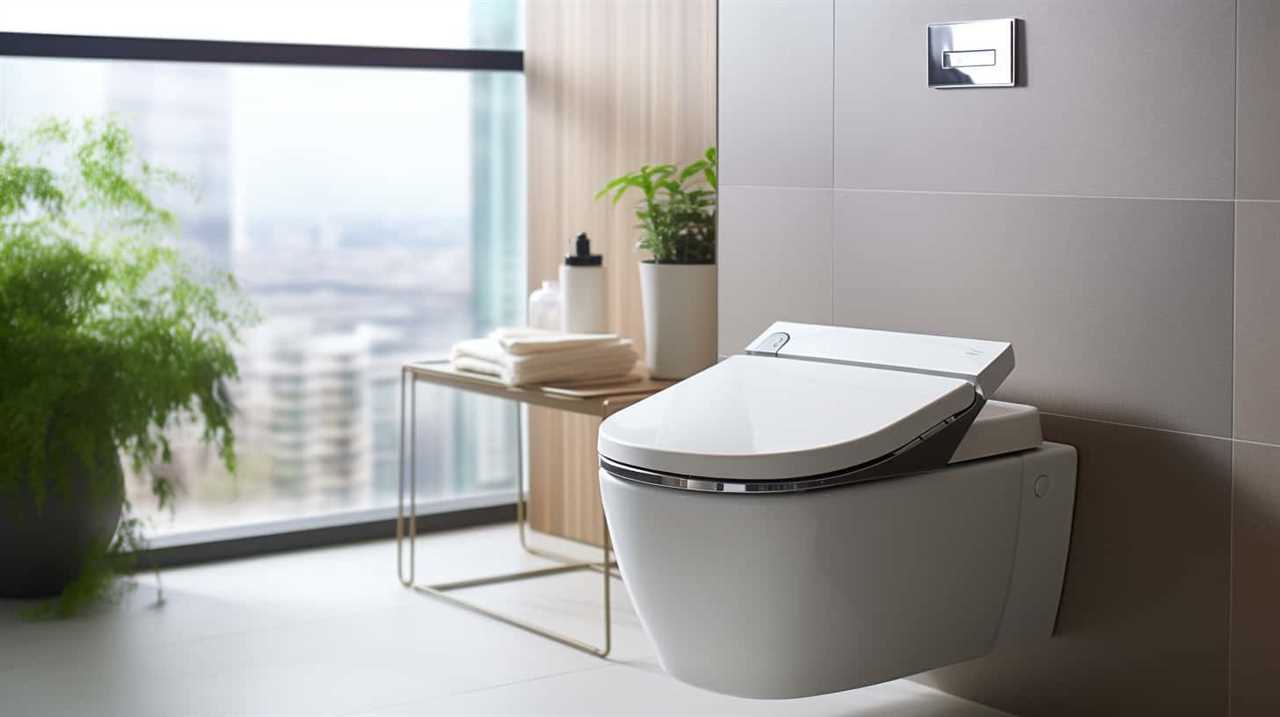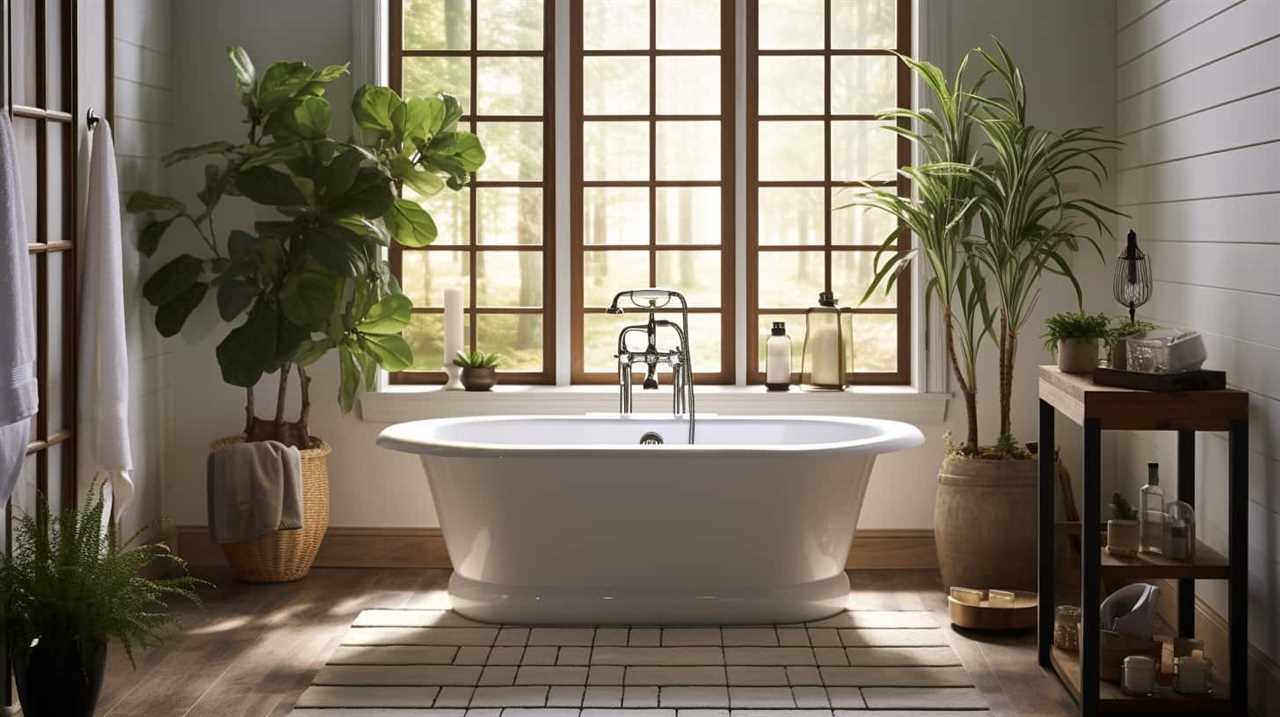We have all experienced it – waiting impatiently in front of a toilet that is draining slowly, pondering what could be causing the issue. But do not worry, as in this article, we will discuss the typical reasons for slow-draining toilets and offer DIY solutions to resolve the problem.
Whether it’s a clog in the pipes or a faulty flush valve, we’ve got you covered. So let’s roll up our sleeves and get to the bottom of this toilet trouble!
Key Takeaways
- Common causes of slow-draining toilets include clogged or obstructed pipes, excessive toilet paper usage, flushing non-flushable items, mineral deposits, and debris buildup.
- Signs and symptoms of a slow-draining toilet may include a rising water level after flushing, gurgling sounds from the pipes, multiple fixtures being affected, a slow spiral of water in the bowl, and stagnant water surrounding the drain.
- DIY solutions to fix a slow-draining toilet include using a plunger, trying a mixture of baking soda and vinegar, using a toilet auger (plumbing snake), wearing gloves and following safety precautions, and regular maintenance.
- It is recommended to call a professional plumber for help if DIY solutions are unsuccessful, there is persistent slow drainage, backups occur in other fixtures, foul odors or gurgling sounds are present, or if the issue indicates a more serious problem.
Common Causes of Slow-Draining Toilets
One common cause of slow-draining toilets is a clogged or obstructed pipe. When there’s a toilet clog, water is unable to flow freely through the pipes, resulting in slow drainage. Plumbing issues, such as excessive toilet paper usage or flushing of non-flushable items, can lead to these clogs.
Additionally, mineral deposits, debris buildup, or tree root intrusion can also obstruct the pipe, causing the toilet to drain slowly. It’s important to address these issues promptly to prevent further damage to the plumbing system.

In the next section, we’ll discuss the signs and symptoms of a slow-draining toilet, which can help you identify the problem and take appropriate action.
Signs and Symptoms of a Slow-Draining Toilet
Now let’s delve into the signs and symptoms that we may experience when dealing with a slow-draining toilet. Here are some possible indicators that your toilet is draining slowly:
- Water level rises: If you notice that the water level in the bowl is higher than usual after flushing, it could be a sign of a slow-draining toilet. This indicates that there may be an obstruction in the drain or sewer line.
- Gurgling sounds: Another symptom of a slow-draining toilet is gurgling sounds coming from the pipes. This occurs when air is trapped in the plumbing system due to a blockage, causing the water to drain slowly.
- Multiple fixtures affected: If you have more than one fixture, such as the sink or bathtub, that’s draining slowly or experiencing backups, it could be an indication of a larger issue in the sewer line.
These signs and symptoms highlight the possible underlying issues that can cause a slow-draining toilet. Regular maintenance is important to prevent blockages and keep your toilet functioning properly.
DIY Solutions to Fix a Slow-Draining Toilet
To fix a slow-draining toilet, we can start by using a plunger. This simple tool can often dislodge minor clogs and restore normal drainage. If the plunger doesn’t work, there are other DIY solutions to consider. One natural remedy is using a mixture of baking soda and vinegar. Simply pour half a cup of baking soda into the toilet bowl, followed by half a cup of vinegar. Let it sit for a few minutes, then flush with hot water. Another option is using a toilet auger, also known as a plumbing snake, to break up stubborn clogs. Insert the auger into the toilet drain and twist it to dislodge the blockage. Remember to always wear gloves and follow safety precautions when attempting these DIY solutions.

| DIY Solutions to Fix a Slow-Draining Toilet |
|---|
| 1. Use a plunger |
| 2. Try a mixture of baking soda and vinegar |
| 3. Use a toilet auger |
| ——————————————– |
When to Call a Professional Plumber for Help
We should consider calling a professional plumber for help if our attempts to fix the slow-draining toilet using DIY solutions have been unsuccessful. While it’s often possible to resolve minor plumbing issues on our own, there are certain signs that indicate a more serious problem that requires professional attention.
Here are three common signs that indicate it’s time to call a plumber:
- Persistent slow drainage: If the toilet continues to drain slowly even after trying DIY solutions such as plunging or using drain cleaners, it may be an indication of a deeper clog or a more complex issue.
- Backups in other fixtures: If you notice backups or slow drainage in other fixtures, such as sinks or showers, along with the slow-draining toilet, it could be a sign of a main sewer line blockage that requires professional expertise.
- Foul odors or gurgling sounds: Unpleasant odors or gurgling sounds coming from the toilet may indicate a problem with the plumbing system, such as a sewer vent blockage or a damaged pipe.
Preventive Measures to Avoid Slow-Draining Toilets
One way to prevent slow-draining toilets is by regularly maintaining the plumbing system. Proper toilet maintenance is crucial for avoiding clogs and ensuring efficient drainage.
To start, regularly inspect the toilet bowl and tank for any signs of leaks or cracks. Replace any worn-out parts immediately to prevent water from seeping into the base and causing clogs.

Additionally, it’s essential to clean the toilet regularly to remove any buildup of mineral deposits or debris that can obstruct the flow of water. Using a toilet brush and a mild cleaner, scrub the bowl thoroughly, including under the rim and around the siphon jet.
Finally, be mindful of what you flush down the toilet. Avoid flushing items that can easily cause clogs, such as wet wipes, feminine hygiene products, and excessive amounts of toilet paper.
Frequently Asked Questions
What Are Some Other Potential Causes of a Slow-Draining Toilet That Are Not Mentioned in the Article?
Other potential causes of a slow-draining toilet, not mentioned in the article, could include a clogged vent stack, a malfunctioning flush valve, or a problem with the sewer line.
How Can I Determine if a Slow-Draining Toilet Is a Sign of a Larger Plumbing Issue?
Determining if a slow-draining toilet indicates a larger plumbing issue is crucial. We should look for signs like multiple fixtures backing up or strange noises in the pipes. Consulting a professional is recommended.

Are There Any Temporary Solutions I Can Try Before Attempting the DIY Solutions Mentioned in the Article?
Temporary fixes for a slowly draining toilet include using a plunger, pouring hot water and soap down the drain, or using a plumbing snake. These quick remedies can help alleviate the issue before attempting more extensive DIY solutions.
What Are Some Common Mistakes to Avoid When Attempting to Fix a Slow-Draining Toilet on My Own?
When attempting to fix a slow-draining toilet on our own, it is important to avoid common mistakes. By following DIY solutions properly and avoiding errors, we can ensure a successful fix.
Are There Any Specific Preventive Measures I Can Take to Reduce the Likelihood of My Toilet Draining Slowly in the Future?
Preventive measures and DIY solutions can help reduce the likelihood of future toilet drainage issues. Regularly cleaning the pipes, avoiding flushing non-flushable items, and using a plunger can maintain proper drainage.
Conclusion
In conclusion, a slow-draining toilet can be caused by various factors such as clogs, low water levels, or issues with the plumbing system.

It’s important to address this issue promptly to prevent further damage.
Remember, a slow-draining toilet is like traffic on a busy highway – it may start with a small delay, but if left unattended, it can lead to a major roadblock.
So, take action, whether through DIY solutions or professional help, to ensure your toilet flows smoothly.










